4 Septembert 1778 Friday
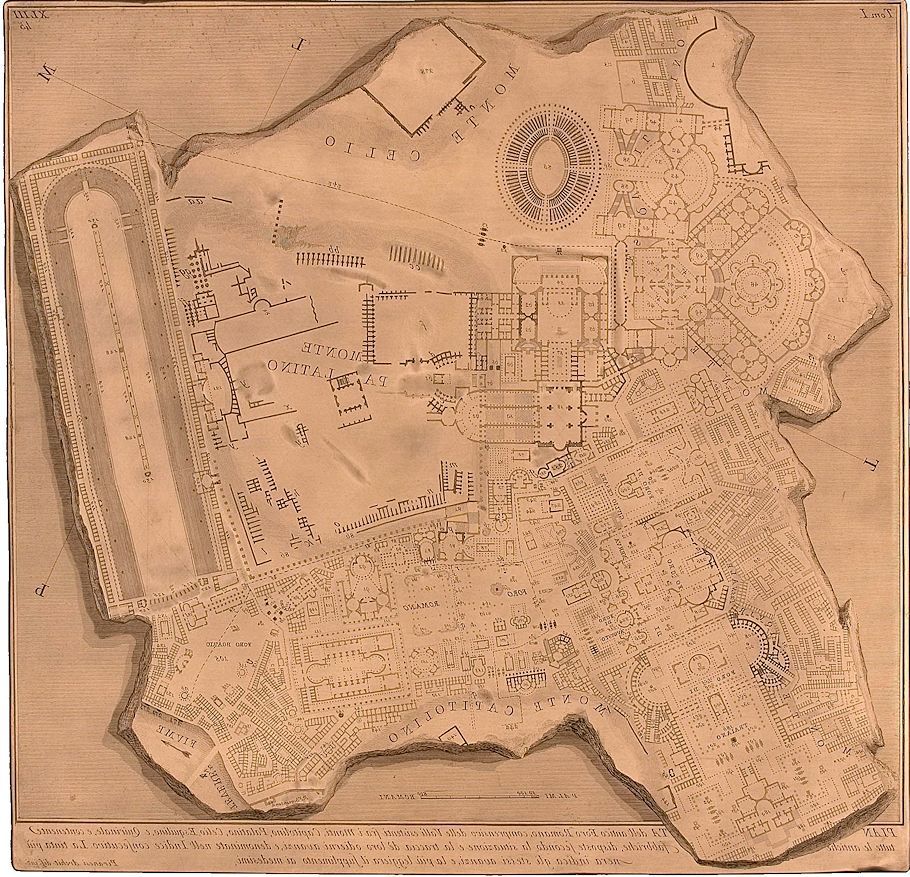
Etching of the new Circus Maximus plan is done, the copper plate is prepared, and the first proof will be printed tomorrow.
Artifacts of the Bianconi vs Piranesi 'Circus of Caracalla' affair 1772-1789
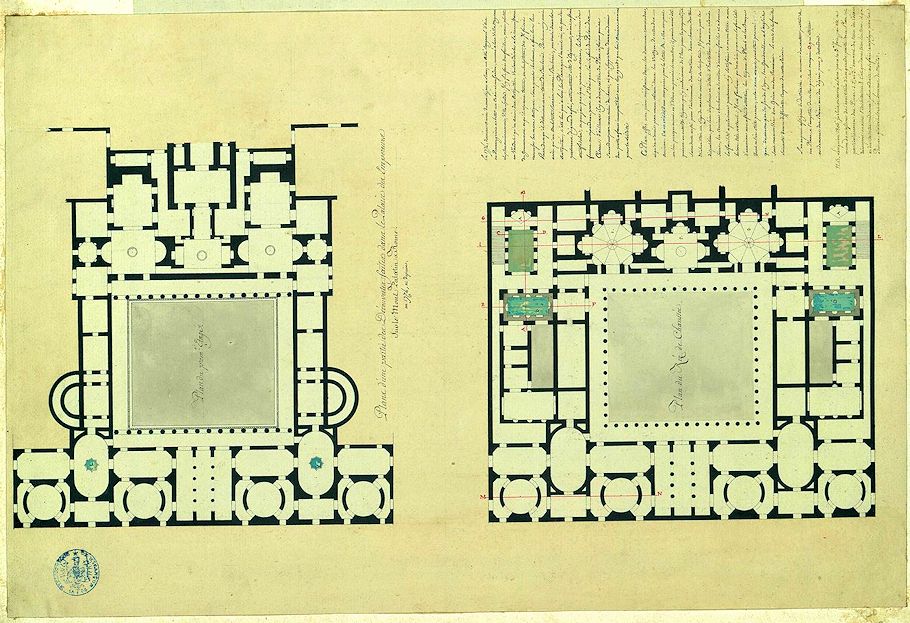
Pierre-Adrien PÔris 1774
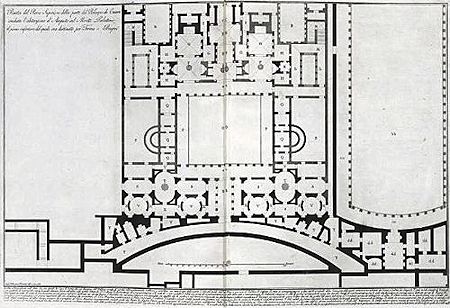 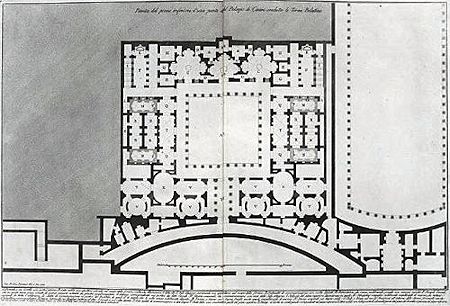
Francesco Piranesi 1787
It could well be that sometime 1773-74 Pierre-Adrien and Francesco surveyed the remains of the Palace of the Caesars together.
47 y.o. Francesco Piranesi 1805
Le AntichitÓ della Magna Grecia Parte II

Interior view of the Pronao, and of the cell of the Temple of Isis.
Drawn by G.B. Piranesi
Engraved by F. Piranesi Year 13 (1805)
4 September 1812 Friday
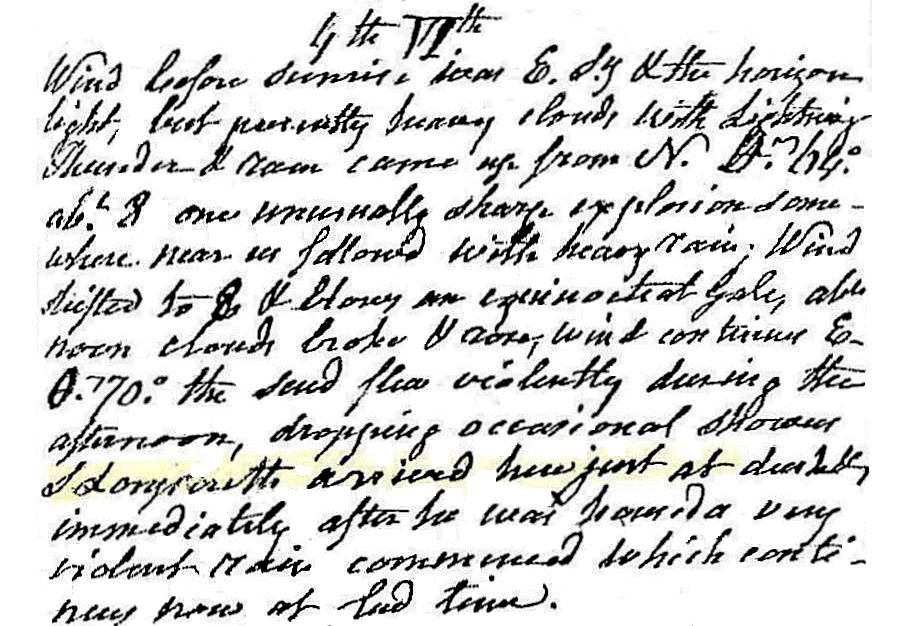
Wind before sunrise was E southerly and the horizon light, but presently heavy clouds with lightening, thunder and rain came up from N, temperature 64░. About 8 one unusually sharp explosion somewhere near us followed with heavy rain. Wind shifted to E and blows a heavy equinoctial[?] gale. About noon clouds broke and rose, wind continued east, temperature 70░. The sand[?] flew violently during the afternoon, dropping occasional showers. S. Longstreth arrived here just at dusk and immediately after he housed[?] a very violent rain commenced which continues now at bedtime.
4 September 1977 Saturday
This now was for sure my last full day in Rome, and I have no idea of what I did that day.
4 September 2001
Re: Cathedral of Tyre 314?
...in the specific case of the Cathedral of Tyre, the date of dedication is still significant because of its closeness to the (so-called) Edict of Milan (313) enacted between Constantine and Licinius. [I'm writing on the fly here, so I don't have the exact date of the Edict at hand.] As I recall, it was at the same time in Milan that most scholars believe that Constantine's half-sister Constantia was betrothed to Licinius as well. In this light, I personally believe any three of the above personalities could have been directly involved with the renewed church building at Tyre. Constantia surely died a Christian, and was indeed very religiously active during and after the years of her marriage to Licinius. For example, I just recently learned that Constantia was both present and actively vocal at the Council of Nicaea. She was also very close (friends) with Bishop Eusebius of Nicomedia (not to be confused with Eusebius of Caesarea who wrote the Vita Constantini).
My thesis all along is that Constantine of course was ruler during the Christian church building boom of the 310s and 320s, but that the real champion of the church building cause was indeed Helena, and, to a lesser extent, other high Imperial women like Eutropia, and perhaps even Constantia, and maybe later even Constantina, Constantine's daughter. The Helena and Eutropia chapters of the Vita Constantini Book III are, I believe, indicative of what happened and how it (the church building) happened. In simple terms, Helena's activities had Constantine's automatic sanction, including full access to the imperial treasury, thus the expeditiousness of the church building in Rome during the 310s and the same expediency of church building in the Holy Land 325 and right after. Furthermore, a careful reading of Constantine's account of his letter from Eutropia regarding the holy site at Mamre (VC III 52) further discloses the outright gleefulness that the Imperials came to savor in their Christian church/architecture efforts.
I am looking at this distinct church building occurrence from the view point of a modern registered architect, and I'm most intrigued by how quickly it all happened. It doesn't matter what age or era we talk about when it comes to the real time it takes to erect buildings. That so much was very quickly accomplished, for example, in Rome in the years just after late October 312, implies, to me at least, that someone was there supervising, and even planning, the architectural activities, otherwise it just would not have happened with the obvious careful intentionality that it did. My candidate for the person "in charge" is Flavia Julia Helena Augusta. (For contexts sake, remember Constantine himself spent a total of only a few months in Rome during the years between 28 October 312 and 3 August 325.)
So, back to the Cathedral of Tyre. What this church may represent is the (just pre-Constantinian)prototype for basilican church design of the early fourth century. That such a prototype should come from the East is also significant in that other architectural innovations at that time also seem to have come from the East. For example, the brickwork of the Aula Palatina, the Constantinian throne hall at Treves (Trier, Germany) circa 306-312, according the Ward-Perkins, exhibits masonry technique up until then only known in the East. So again, can anyone verify the date of the dedication of the Cathedral of Tyre in Phoenicia?
Catherdral of Tyre 314?
Michael wrote:
Another possibility, of course, is that Constantine simply took credit for the church (or Eusebius et al. gave him credit) after the fact.
Steve adds:
I don't know that there is any late antique reference to Constantine being at all connected with the re-building of the Cathedral of Tyre. It appears to be more of a "modern" connection that has been made.
Probably because there is hardly any physical evidence left of the pre-Constantine Christian churches throughout the East (e.g., the church of Nicomedia that was right across from Diocletian's palace there), it seems often overlooked that there indeed were Christian churches in existence prior to Constantine's rulership. Constantine certainly cannot be given credit for the original erection of the church of Nicomedia, nor can the earlier Imperial hierarchy for that matter. It seems only logical that the Christian's themselves, along with their priestly hierarchy, were already responsible for building churches in the East prior to 28 October 312. The case in Rome seems different, however, in that prior to October 312 actual churches did not exist, rather only catacombs and domestic gathering places. Thus, in the case of the Cathedral of Tyre, it could just as well have been the Christians of Tyre themselves that straight away after the Edict of Milan (February 313), i.e., when the Christians in the East got back what was taken from them during the Great Persecution, set out to rebuild their church that was destroyed under Diocletian.
For the record, Constantine spent most of the year and a half after the Edict of Milan at Trier, which is more or less Tyre's opposite extreme in the Empire.
Philadelphia Museum of Art
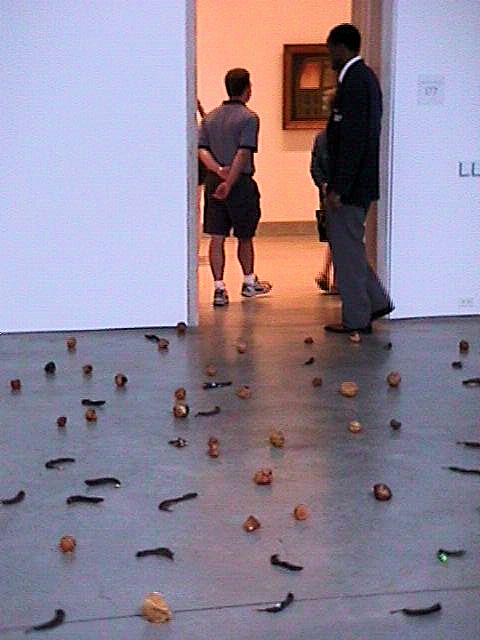
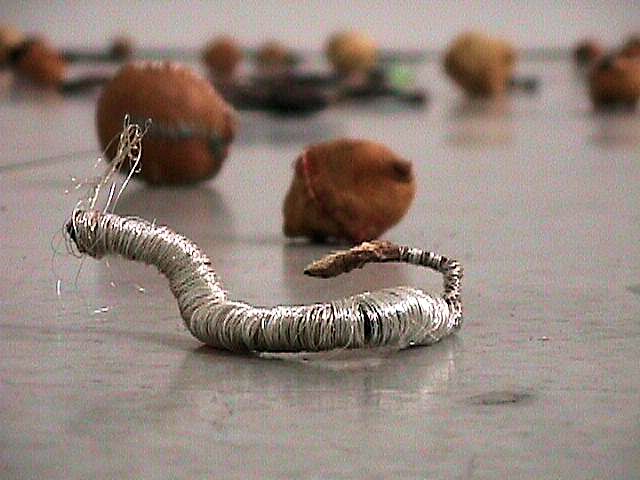
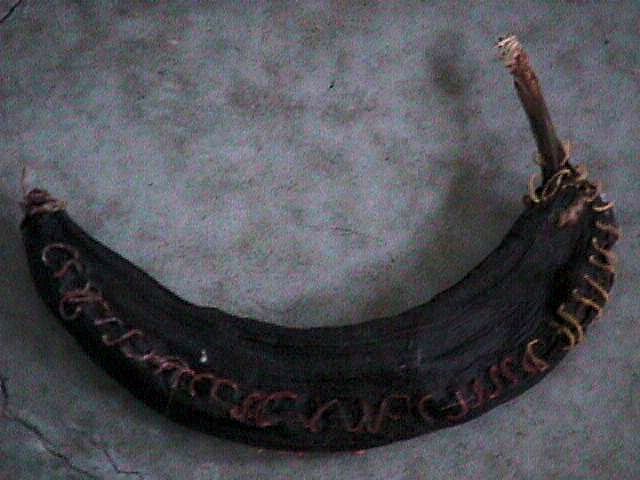
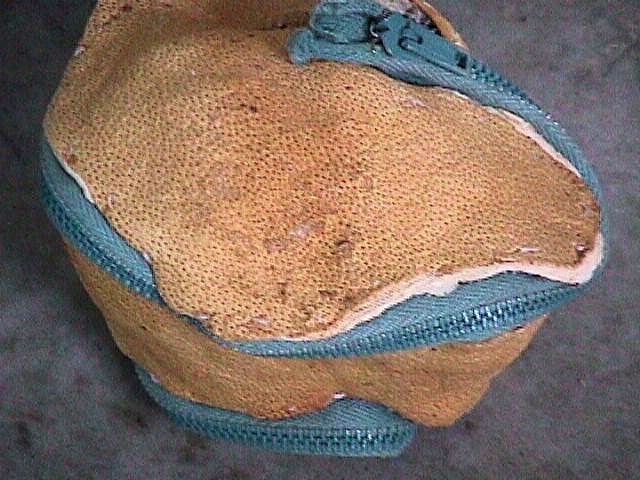
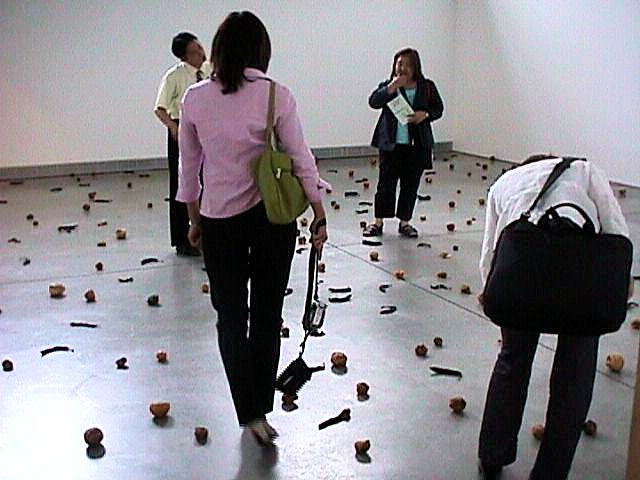
Zoe Leonard Strange Fruit (for David) 1992-97
4 September 2003
in the thick of reenactment season
Today: I purposefully walked from the front door of the Philadelphia Museum of Art down the Benjamin Franklin Parkway to the far side of Logan Circle and then back to the Art Museum. I did this to get a real sense of the scale of the virtual axis of life within Piranesi's Ichnographia Campus Martius
In reality I was walking across the forecourt of the Philadelphia Museum of Art, then down the steps that Rocky made famous running up, then across Eakins Oval, where the largest painting in the world once was, then down a tree lined allÚe along the south side of the Parkway stretching for three long blocks, then around Logan Circle, and then back in the direction I came although this time along the north side of the Parkway.
In virtuality I was walking through the Nympheum Neronis high on the Vatican Hill, through the Porticus Neronis, through the Templum Martis (Temple of Mars), through the Area Martis where the Triumphal Way begins its "march" (this is around where the Rodin Museum is on the Benjamin Franklin Parkway, and, as luck would have it, where the route of many of today's Philadelphia parades begin), then I walked around Hadrian's tomb, and then I walked back.
The whole walk took about 40 minutes, and if I had gone all the way to the LOVE sculpture at JFK Plaza across from City Hall, the walk back and forth would have taken just about an hour.
Today, I made mental note of most of the memorials on and along this stretch of the Parkway--Washington Memorial, Civil War Memorial, WWI Memorial, a plaque in the cement on axis at Logan Circle states that the trees along the Parkway were planted on honor of the soldiers of WWI, and a Shakespeare Memorial in front of the Free Library.
When I got back to the top of the famous Art Museum steps, a young Japanese(?) tourist (or new student in town?) asked me (without much English) to take his picture with the Art Museum in the background, and then I told him I'll take another picture of him looking the other way with the Philadelphia skyline in the background.
Re: CFP: Museums and the Web 2004
... There's nothing fancy about the display, but I like the effect of "going through a museum" on a day by day, as opposed to room by room, basis.
[Thinking just now:] a calendrically mnemonic museum design.
4 September 2007
from Writing Rome
"One might compare the city of Rome, in which buildings of different periods were everywhere juxtaposed, to the funeral of a Roman aristocrat, where living members of the family wore masks to represent prominent figures of previous generations, mingling with one another indifferently across the centuries."
"For Romans, places might be thought to embody memory, to preserve a reassuring fixed version of the city's past, but places too, as we have seen, could be rewritten. The two huts of Romulus, with their competing claims to authenticity, were an uncomfortable reminder that Roman history was never simple or uncontested."
"The end of Livy Book 5 describes the rebuilding of Rome in the wake of the Gallic sake. The Romans were in a great hurry to rebuild, he writes, and for this reason there was no order to the new city, so that forma . . .urbis sit occupatae magis quam divisae similis, 'the arrangement of the city resembles that of a place taken over rather than portioned out'. Occupata here may be read as evoking Rome's recent occupation by the Gauls. Kraus draws our attention to Tacitus' reading of this Livian episode, which the latter author makes use of in his account of the destruction of Rome in the Neronian fire and the city's subsequent rebuilding. Tacitus' account presents Nero's fire as worse than the Gallic sack, for it causes destruction of monuments witnessing the origins of Rome. Rome is then rebuilt; large areas in the centre of the city are taken over for Nero's Domus Aurea. Nero's appropriation of the city is like that of a foreign enemy."
"While Propertius' treatment of Rome approaches the city topographically, Ovid chooses the Roman calendar as his organizing scheme. Ovid composed his poem at around the same time as was published an 'official' version of the Augustan calendar (incorporating the princips' new festivals), which seems to have been largely the work of the scholar Verrius Flaccus, a freedman of the emperor. Recent studies have suggestively examined the treatment of time in Ovid's Fasti, exploring the means by which the poet engages with Augustus' ideological appropriation of the calendar."
"Six temples in the Campus Martius originally constructed by triumphant generals of the republic now celebrated their foundation on 23 September, Augustus' birthday--a prelude to the monopolisation of triumphs by the imperial family after 19 BCE. It was not possible, then, to consider the organization of Roman time without engaging also with the spatial context through which Roman time was articulated."
Catharine Edwards, Writing Rome: textual approaches to the city (1996).
4 September 2012
Architecture and the Lost Art of Drawing
Back in 1986, when I was Intergraph CAD system manager at the University of Pennsylvania's Graduate School of Fine Arts, one of the planning professors recently came back from China with research on some vernacular architecture. He was adamant about drawing up some of his research using CAD, thus I had to quickly train him with at least the basics (which really wasn't my job). Anyway, the professor came in diligently to use his allotted time on the computer, and ultimately produced a pen plot of his drawings. He was so proud, and stupid me didn't even get the reason why until a month later. The reason was obvious and right in front of me the whole time--the professor only had one hand with limited dexterity, and he couldn't draw except with the aid of a computer.
...realize that computers have opened up the opportunity, to draw, to a whole range of people that couldn't do it otherwise.
4 September 2014
Why Modern Architecture Struggles to Inspire Catholics
If one says, "so many modernist sacred places and memorials/monuments are unsuccessful," then I assume there is actual evidence to back up such a claim. Without the evidence, the claim might just be a myth.
Regarding a passage in the article where the author claims his brother is representative of the larger group of Catholics that have a sophisticated knowledge of their religion, that's just plain false. Most Catholics, and even the author, lack a sophisticated knowledge of their religion, and instead their knowledge is based on a late-nineteenth century whitewash of the religion and its real history. Along those lines, read Morris's American Catholic for a more accurate description of what the faithful are really, albeit unwittingly, believing in.
Why Modern Architecture Struggles to Inspire Catholics
EKE, answer my questions first and then I'll answer yours. In the meantime, however, my answer will involve an almost sentence by sentence analysis of the article's ongoing examples of unsophisticated knowledge. Beyond that, I'd cite my own research of Helena and Eutropia, the mother and mother-in-law of Constantine the Great respectively, and their predominate role as Christianity's first organized church builders. Indeed, the role of women in general in the early Church is full of lessons that would very much benefit the Church today.
4 September 2017
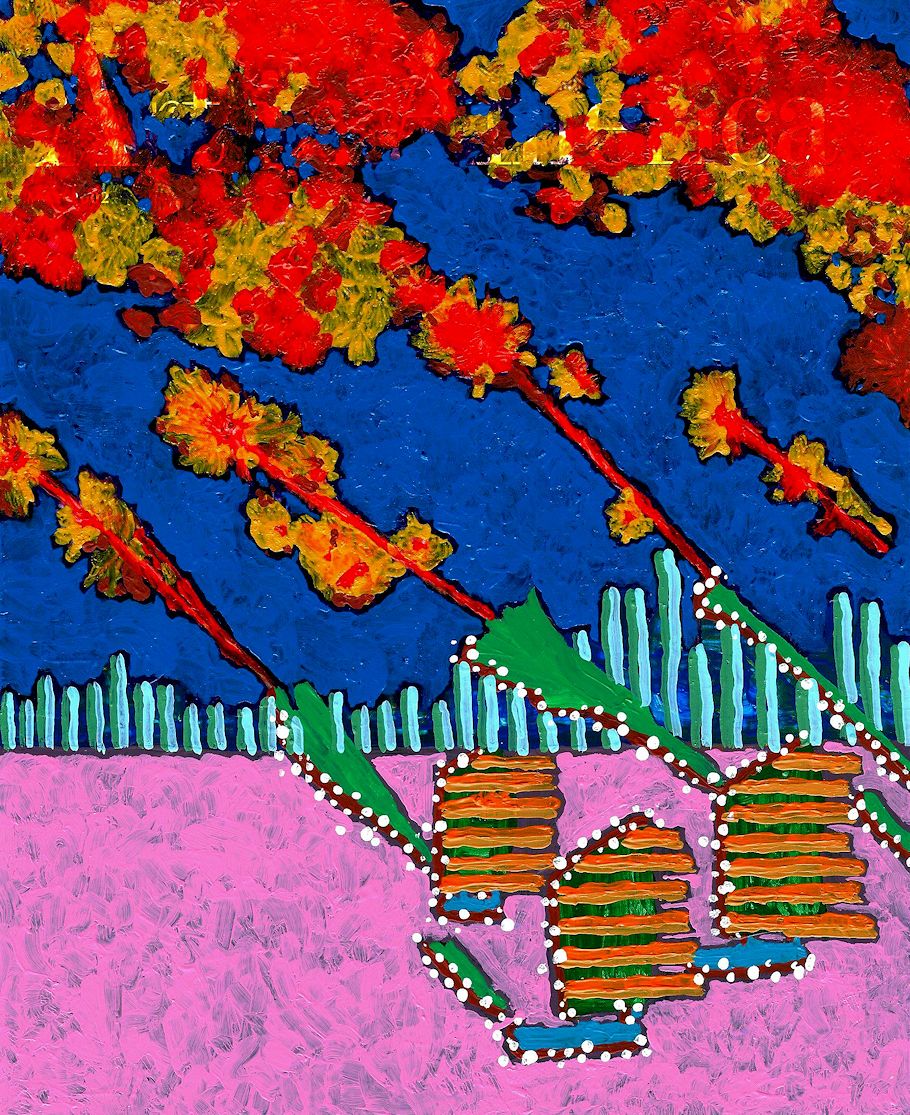
zero eight two
4 September 2020
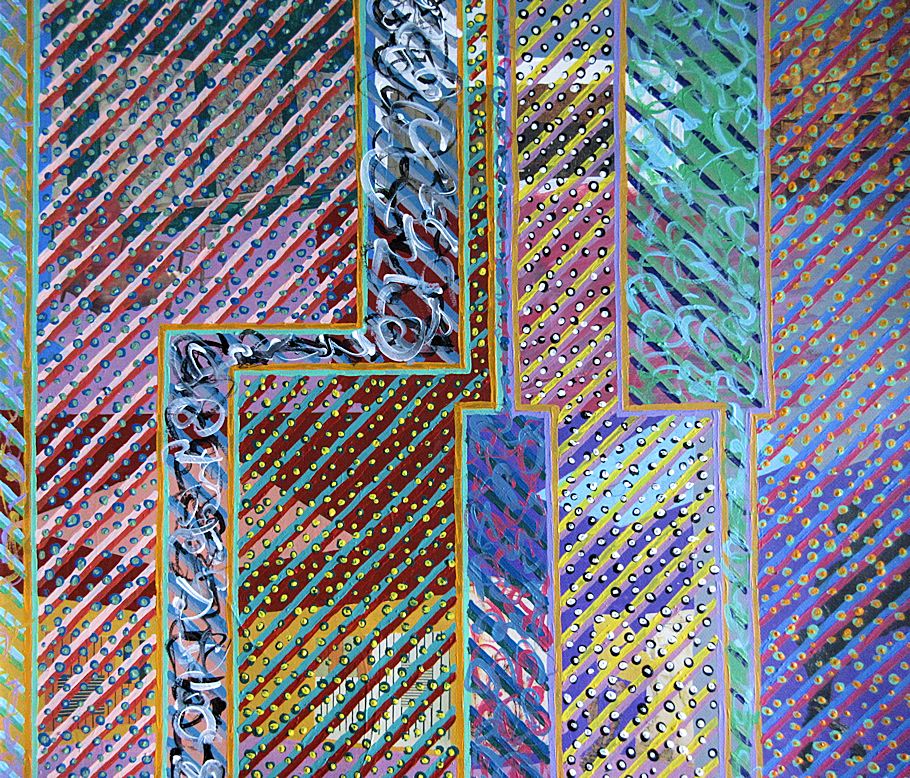

Mary Boone's 180 hours of community service hour 160
4 September 2021
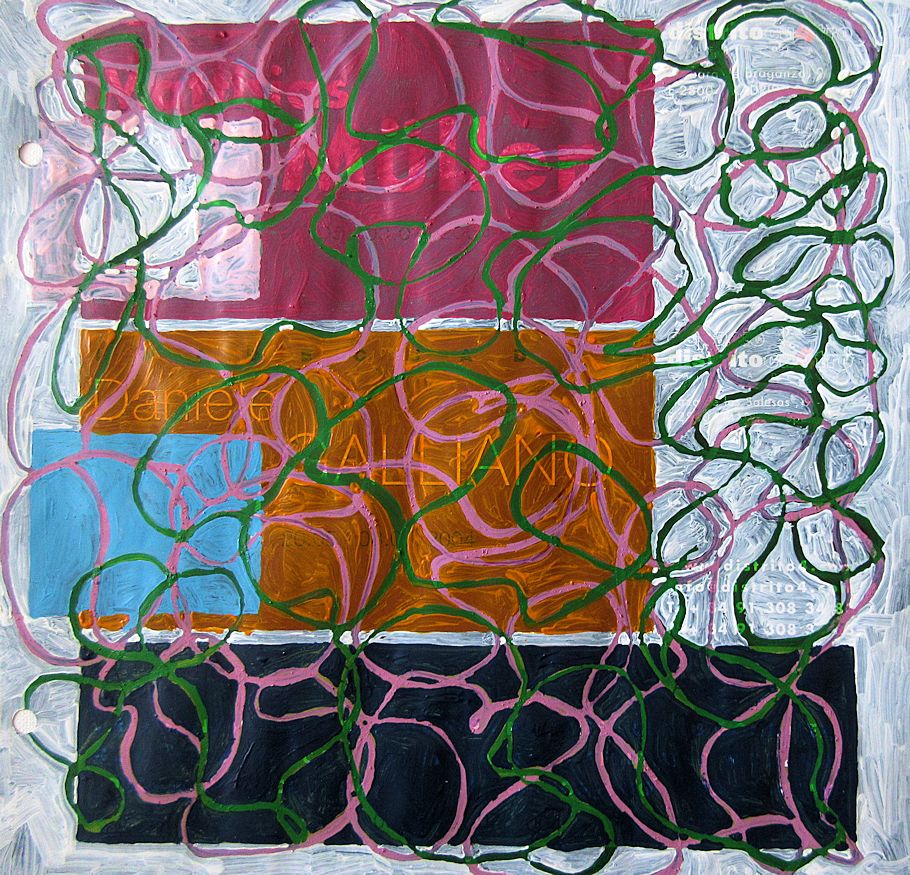
4 September 2022
As per usual, another tiring day.
4 September 2023 Monday
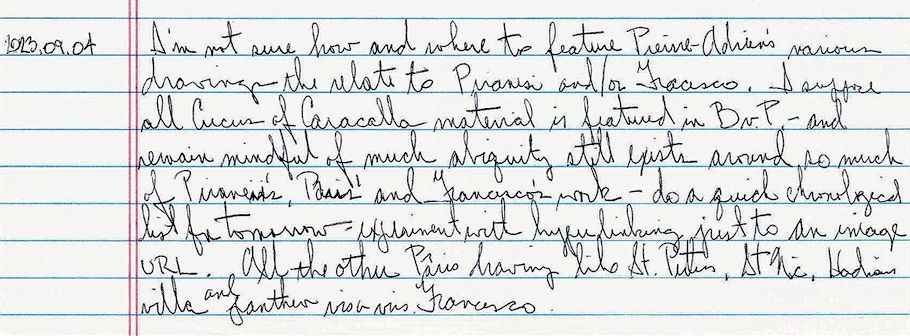
|